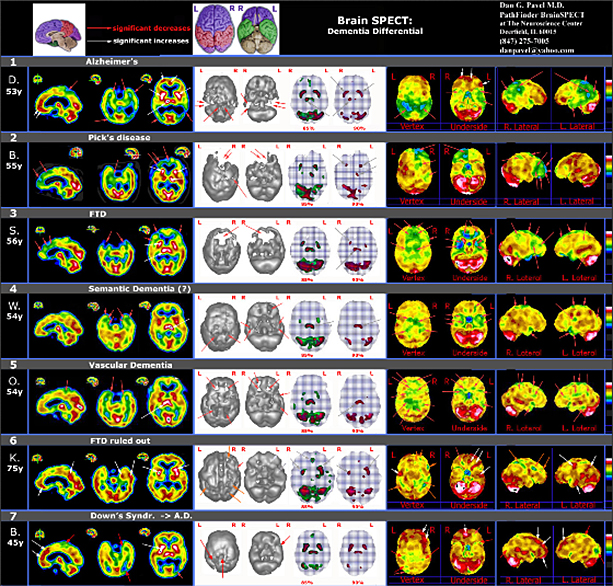Brain SPECT in Dementia Differential
Of interest are the marked differences between individual patients and a great variability in the amount of blood supply (color) to the respective brain structures of each subject. At the same time the high definition of these color displays is what allows the detection of detailed cortical and subcortical features, subsequently included in the report. This results in the type of functional information sought and used by the referring physician to refine the treatment strategy and evaluate prognosis.
The figure below represents a group of adults (ages noted in the left column) with a variety of coexisting conditions including cognitive, behavioral, memory changes which raise the question of dementia differential e.g. are the images compatible or not with a degenerative disease (ex Alzheimer’s) or with another cause (ex. Vascular). If the answer is yes, then how advanced may the disease be, e.g. what is the prognosis. Note that the differential of dementia is not only a problem of old age. Indeed the age of the first five patients was between 52 and 56 y and, for the sixth patient (75 y), degenerative disease was ruled out by Brain SPECT and by the subsequent response to treatment.

